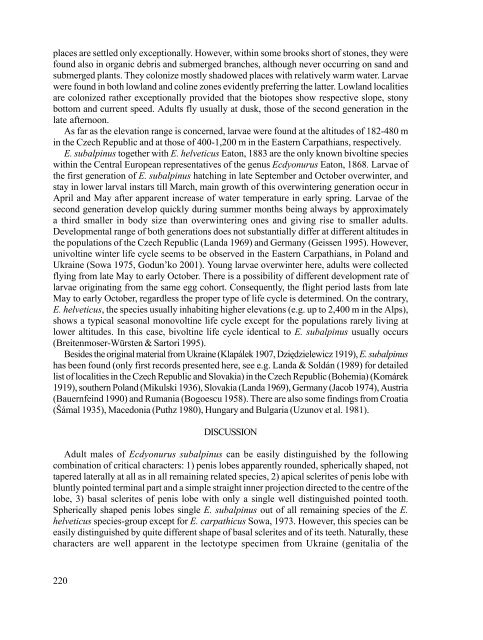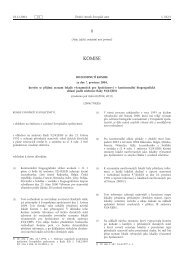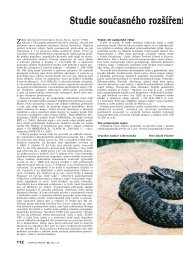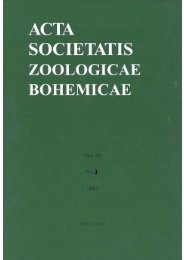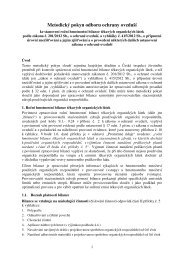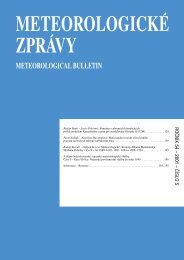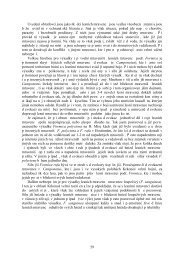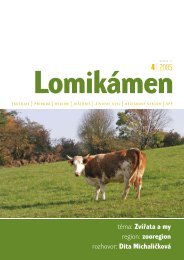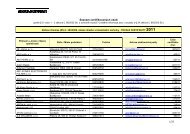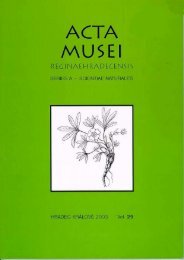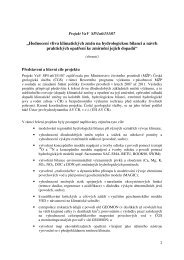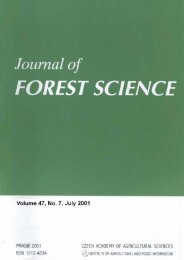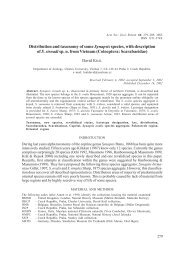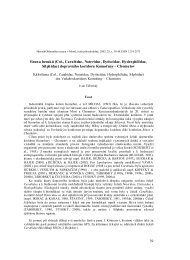Sie wollen auch ein ePaper? Erhöhen Sie die Reichweite Ihrer Titel.
YUMPU macht aus Druck-PDFs automatisch weboptimierte ePaper, die Google liebt.
places are settled only exceptionally. However, within some brooks short of stones, they were<br />
found also in organic debris and submerged branches, although never occurring on sand and<br />
submerged plants. They colonize mostly shadowed places with relatively warm water. Larvae<br />
were found in both lowland and coline zones evidently preferring the latter. Lowland localities<br />
are colonized rather exceptionally provided that the biotopes show respective slope, stony<br />
bottom and current speed. Adults fly usually at dusk, those of the second generation in the<br />
late afternoon.<br />
As far as the elevation range is concerned, larvae were found at the altitudes of 182-480 m<br />
in the Czech Republic and at those of 400-1,200 m in the Eastern Carpathians, respectively.<br />
E. subalpinus together with E. helveticus Eaton, 1883 are the only known bivoltine species<br />
within the Central European representatives of the genus Ecdyonurus Eaton, 1868. Larvae of<br />
the first generation of E. subalpinus hatching in late September and October overwinter, and<br />
stay in lower larval instars till March, main growth of this overwintering generation occur in<br />
April and May after apparent increase of water temperature in early spring. Larvae of the<br />
second generation develop quickly during summer months being always by approximately<br />
a third smaller in body size than overwintering ones and giving rise to smaller adults.<br />
Developmental range of both generations does not substantially differ at different altitudes in<br />
the populations of the Czech Republic (Landa 1969) and Germany (Geissen 1995). However,<br />
univoltine winter life cycle seems to be observed in the Eastern Carpathians, in Poland and<br />
Ukraine (Sowa 1975, Godun’ko 2001). Young larvae overwinter here, adults were collected<br />
flying from late May to early October. There is a possibility of different development rate of<br />
larvae originating from the same egg cohort. Consequently, the flight period lasts from late<br />
May to early October, regardless the proper type of life cycle is determined. On the contrary,<br />
E. helveticus, the species usually inhabiting higher elevations (e.g. up to 2,400 m in the Alps),<br />
shows a typical seasonal monovoltine life cycle except for the populations rarely living at<br />
lower altitudes. In this case, bivoltine life cycle identical to E. subalpinus usually occurs<br />
(Breitenmoser-Würsten & Sartori 1995).<br />
Besides the original material from Ukraine (Klapálek 1907, Dzi-dzielewicz 1919), E. subalpinus<br />
has been found (only first records presented here, see e.g. Landa & Soldán (1989) for detailed<br />
list of localities in the Czech Republic and Slovakia) in the Czech Republic (Bohemia) (Komárek<br />
1919), southern Poland (Mikulski 1936), Slovakia (Landa 1969), Germany (Jacob 1974), Austria<br />
(Bauernfeind 1990) and Rumania (Bogoescu 1958). There are also some findings from Croatia<br />
(Šámal 1935), Macedonia (Puthz 1980), Hungary and Bulgaria (Uzunov et al. 1981).<br />
DISCUSSION<br />
Adult males of Ecdyonurus subalpinus can be easily distinguished by the following<br />
combination of critical characters: 1) penis lobes apparently rounded, spherically shaped, not<br />
tapered laterally at all as in all remaining related species, 2) apical sclerites of penis lobe with<br />
bluntly pointed terminal part and a simple straight inner projection directed to the centre of the<br />
lobe, 3) basal sclerites of penis lobe with only a single well distinguished pointed tooth.<br />
Spherically shaped penis lobes single E. subalpinus out of all remaining species of the E.<br />
helveticus species-group except for E. carpathicus Sowa, 1973. However, this species can be<br />
easily distinguished by quite different shape of basal sclerites and of its teeth. Naturally, these<br />
characters are well apparent in the lectotype specimen from Ukraine (genitalia of the<br />
220


